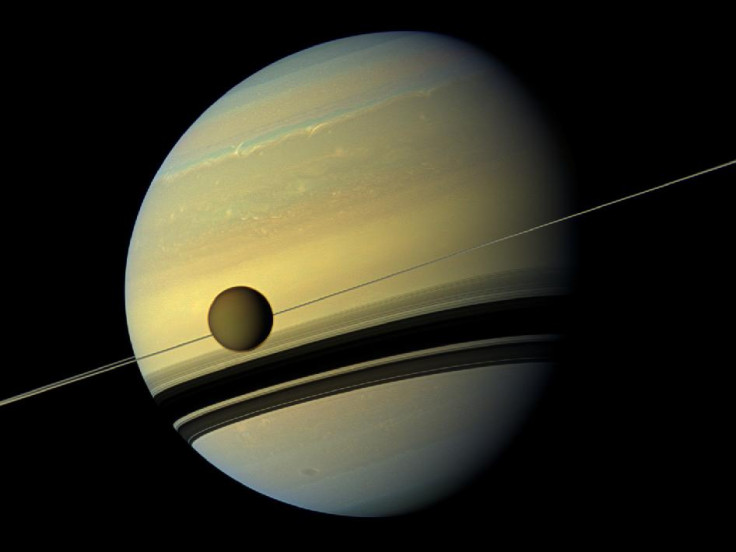Nasa's Cassini Spots Huge Mystery Object on Titan's Alien Sea Ligeia Mare

Nasa's Cassini spacecraft has spotted a huge mystery object in one of Titan's hydrocarbon seas. The feature covers an area of about 100sq/m and is in Ligeia Mare, one of the largest seas on Titan.
Experts are now monitoring the object and say its appearance has changed twice in the two times it has been observed.
The feature was first spotted during Cassini's July 2013 flyby of Titan – Saturn's largest moon. It appeared bright in radar images against the dark background of the sea.
Previously, observations showed no signs of a bright feature in the Ligeia Mare and when Nasa experts looked for it again a few months later, there was no sign of it, suggesting it was a transient feature.
However, during Cassini's latest flyby on 21 August, the feature reappeared, but its appearance had changed: "Scientists on the radar team are confident that the feature is not an artefact, or flaw, in their data, which would have been one of the simplest explanations," Nasa said.

"They also do not see evidence that its appearance results from evaporation in the sea, as the overall shoreline of Ligeia Mare has not changed noticeably."
Three images show the changing appearance of the feature, showing how it was not visible in 2007, but had appeared and changed over 2013 and 2014. In the images, dark areas represent the sea, while bright areas show land surface above or just below the water.
Researchers believe the shifting appearance of the feature could be related to the changing seasons on Titan, as summer draws near in the Northern Hemisphere.
The team suggested a number of theories as to what it could be, including surface waves, rising bubbles, floating solids, solids floating just below the surface, or something "more exotic".
Stephen Wall, the deputy team lead of Cassini's radar team, said: "Science loves a mystery, and with this enigmatic feature, we have a thrilling example of ongoing change on Titan. We're hopeful that we'll be able to continue watching the changes unfold and gain insights about what's going on in that alien sea."
© Copyright IBTimes 2025. All rights reserved.






















